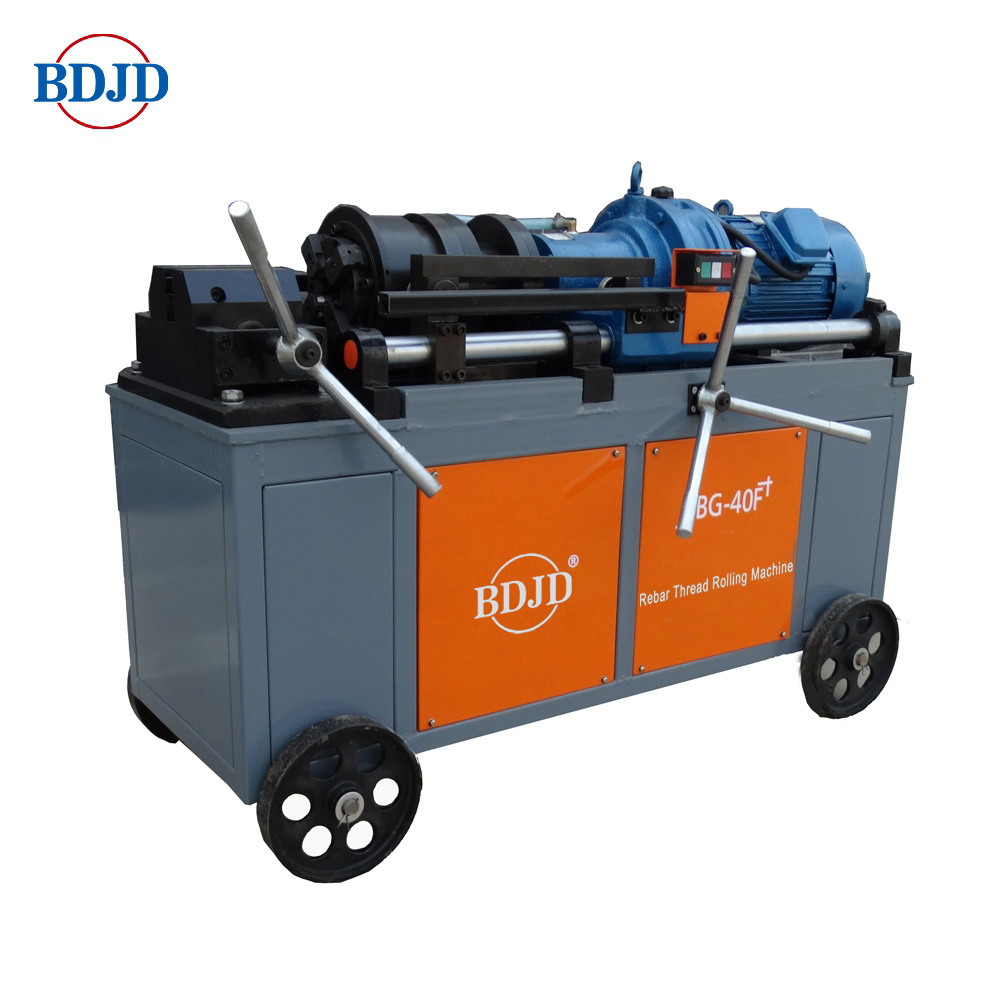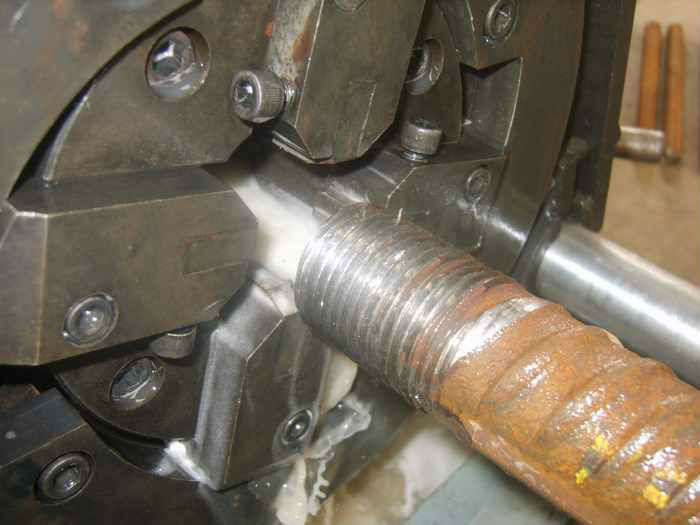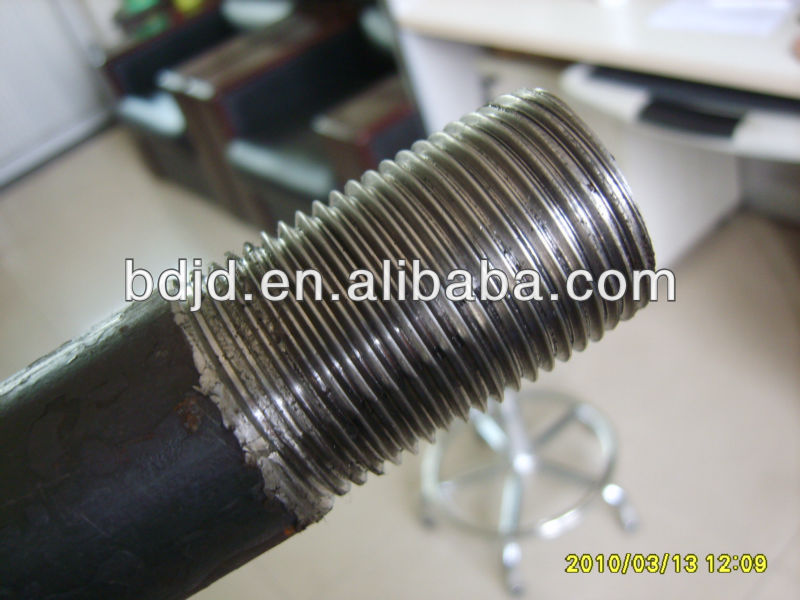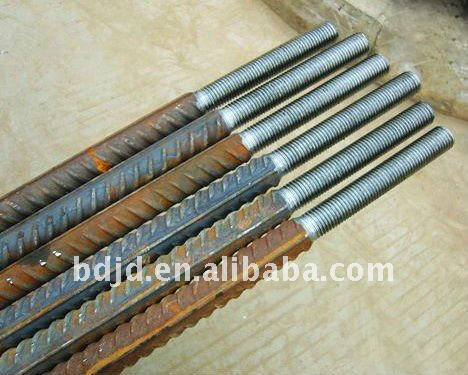The relevant department has not yet discovered GM rice sales in Guangzhou
Yangcheng Evening News reporter Ma Can reported: CCTV recently reported news of GM rice in Hunan, Hubei, Anhui, and Fujian provinces, causing great concern in society. On the 27th, the Yangcheng Evening News reporter found that the relevant departments have not yet discovered the sale of GM rice in the Guangzhou market. At the same time, related functional departments in Guangdong are further strengthening supervision and control.
CCTV reporters purchased 5 kinds of rice at random in a large supermarket in Wuhan. After testing, it was found that three of these five types of rice contained a genetically modified component: BT63, which is also the type of genetically modified components shown in the EU early warning system.
So far, the Chinese government has not approved the commercial cultivation of any kind of GM rice, nor has it approved the import of genetically modified rice, which means that the GM rice and its products that appear on the market are illegal.
The CCTV report quoted a general manager of a food processing company in Shanghai, according to what they know: GM rice has spread and is difficult to recover. Most of the rice in Hunan, Hubei, Anhui, and Fujian have been “contaminated†by genetically modified plants. Because of the large number of rice sources in the market, companies are also hard to detect despite the detection process.
The news of GM rice has caused widespread public concern in Guangzhou. On the afternoon of the 27th, in the supermarket of the Guangzhou Friendship Store, an old lady who was buying rice kept asking the waiter: Which kind of rice does not contain genetically modified ingredients? "It should be affected by CCTV news!" said a waiter reluctantly.
Subsequently, a reporter from the Yangcheng Evening News came to the Xintianyu Cereals, Oils and Foods Wholesale Center, and saw that the porters were unloading rice from a truck from Jiangxi. It is understood that the brand of rice here is rather complicated, and many are still bulk rice. The reporter asked whether there is genetically modified rice, and a stall owner told reporters: Absolutely not!
But the person in charge of a rice factory in Guangzhou said that since most of the processing plants' rice and rice come from all over the country, during the processing, the factory will make certain deployments according to the taste and color of the rice and then package it for sale. "Does not rule out the fact that the processing plant has acquired rice containing genetically modified elements without knowing it."
It is understood that for the detection of rice, China is currently implementing the GB1354-2009 standard. This standard only provides some physical indicators for rice and does not contain genetically modified detection items. Therefore, government regulators and enterprises will not Testing of the outgoing rice makes it impossible for vendors and consumers to know even if some rice contains genetically modified ingredients.
The Yangcheng Evening News reporter learned from relevant functional departments in Guangdong Province that at present, there are no signs of sales of genetically modified rice on the Guangzhou market. The person in charge of the functional department stated that the GM rice incident is currently being further strengthened in supervision and control.
CCTV reporter Investigating Wuhan GM rice: Randomly bought 3 bags of 3 bags with genetically modified genes
In recent years, there have been reports from the media that rice sold in the surrounding markets in Wuhan contains genetically modified ingredients. At the same time, rice products exported to Europe from China are frequently detected with genetically modified components. In the European Union's Food and Feed Rapid Alert System, only 25 of the rice products exported to the European Union in 2013 were found to contain genetically modified components.
So far, the Chinese government has not approved the commercial cultivation of any kind of GM rice, nor has it approved the import of genetically modified rice. This means that the GM rice and rice products that appear on the market are illegal.
In April 2014, CCTV’s “News Investigation†reporter purchased 5 types of rice at random in a large supermarket in Wuhan, Hubei Province. Later, the reporter sent the rice to the Chinese Academy of Inspection and Quarantine for testing. The results of the test were surprising. Among the five kinds of rice, three contained genetically modified components. The reporters found that most of the genetically modified components shown in the EU early warning system are also This type: BT63.
Planting and selling transgenic rice in many places in Wuhan
BT63 is a patented transgenic insect-resistant rice developed by the School of Life Science and Technology of Huazhong Agricultural University. It was successfully developed in 1999. In 2009, BT63 transgenic rice was granted a genetically modified biosafety certificate, but it has not been licensed for commercial planting. According to the "Seed Law of the People's Republic of China," genetically modified crops are not allowed to be commercially grown until they have been licensed for commercial planting.
The Zhongshan Road in Wuchang District of Wuhan City is a famous street of seeds. There are dozens of seed sales shops in large and small sizes. In April 2014, it was the season of rice sowing, because the characteristics of BT63 transgenic rice were mainly insect-resistant, so in the seed market of Wuhan, local people called the transgenic rice as insect-resistant rice.
The reporters found that in the village of Venus in the Lingxia Temple of the Jiangxia section, many farmers are planting genetically modified rice. They bought them at the price of 40 yuan a pound at the seed sales point of Venus Village, but for various reasons, the sales point The boss evaded interviews with reporters.
How is GM rice leaked and spread?
The BT63 transgenic insect-resistant rice is a patent of the School of Life Science and Technology of Huazhong Agricultural University. In theory, all the initial seed sources of the BT63 transgenic rice that appeared in the market were Huazhong Agricultural University. So the reporter went to Huanong and interviewed Huazhong Agricultural University. Professor of Life Science and Technology Zhang Qihe.
Zhang Qifa, Academician of the Chinese Academy of Sciences, is mainly engaged in molecular genetics and genetic engineering research. He is the leader of the BT63 Transgenic Rice Project. The interview did not deny the possibility of the proliferation of GM rice in Huanong.
According to Zhang’s remarks, in the 1990s, the state had no strict legal provisions on the safety management of genetically modified organisms. Many of the scientific research achievements were shared by everyone. Until 2001, the State Council issued the “Administrative Measures for the Safety Management of Agricultural Genetically Modified Organismsâ€. The safety management of GM crops has become standardized. Zhang Qie said that before this, seed companies could easily get the BT63 transgenic insect-resistant rice seeds and then breed them on their own, and then flow into the market. However, according to a number of media reports, Zhang Jianwei once served as the CEO of a company named Conil, which was precisely the source of Huanong's intention to disclose genetically modified rice. The local agricultural law enforcement agency also treated Conil. The company penalized the eradication of genetically modified rice that had not been planted under the approval requirements.
According to Zhang’s remarks, when Conil commissioned another seed company to seed the seed and then distribute the seed to the farmer after he had recycled the seed, he himself was not involved in the operation. Whether or not the seed production company and the farmer would be genetically modified What is the rice seed leaking? Zhang Qilu said that farmers should not have this technology, but seed companies have the possibility of disclosure.
Sales shop owner denied sale of genetically modified rice
The reporter went to Wulijie Town, Jiangxia District, Wuhan, which is also a major rice production area. The reporter found a local peasant and asked her to help her to go to the seed sales point in town to buy genetically modified rice.
According to the farmer, the GM insect-resistant rice is very popular among farmers because it is resistant to locusts. They can save the money for buying pesticides and the labor cost of fighting drugs. It can save two to three hundred dollars per mu. It is quite attractive for a farmer whose agrarian income is only more than 1,000 yuan.
There are nearly 10 seed shops in Wulijie Town, large and small, and the farmers who buy seeds for reporters have entered a sales outlet called Jiexing Seed Store. A few minutes later, the boss turned to the back room and took out two bags of genetically modified insect-resistant rice. However, when reporters once again entered the retail store where farmers bought rice seeds, the proprietress claimed that they never sold genetically modified insect-resistant rice.
Later, the reporter sent the rice seeds they bought to the Beijing Entry-Exit Inspection and Quarantine Bureau for genetic testing. The test results showed that the rice seeds contained insect-resistant transgenic BT63. According to the information on the package of genetically modified rice seeded by the reporter called "Liuyouhui 902," the rice seed was produced by Hunan Xiuhua Science and Technology Co., Ltd. and the reporter went to Hunan Xiuhua Technology Co., Ltd., located in Zhuzhou City, Hunan Province. Co., Ltd., found Li Yonghong, the person in charge of reporting the variety at the time. He said the company could not have genetically modified seeds.
With the assistance of the Zhuzhou City Seed Management Station, the reporter conducted an on-site sampling of the seeds of Liangyou Jianghui 902. The test results showed that the sampled grain does not contain the BT63 insect-resistant transgene. This means that the seeds purchased by the reporter in the seed shops of Jiangxia District in Wuhan and the seeds in the grain warehouse of Hunan Xiuhua Science and Technology Company are not the same rice seeds. Then, what kind of genetically-modified rice seeds were purchased by reporters? How did they get into the seed market?
Genetically modified rice detection loopholes
According to the information on the outer packaging of genetically modified rice, the reporter came to a mouth in the mouth of the joint of urban and rural areas in Huangpi District of Wuhan City. Among the three kinds of rice that were detected by reporters and contained genetically modified genes, two kinds of rice production sites were located. Here.
According to the director of Ni, the rice and rice from their processing plant come from all over the country. During the processing, the factory will make certain deployments according to the taste and color of the rice, and then pack and leave the factory.
In the test report produced by the Ni director, the reporter saw that the current practice of rice in the Wuhan market is the GB1354-2009 standard. This standard only stipulates some of the physical indicators for rice. The local supervisory authorities follow this standard. After rice is tested, qualified rice can enter the market for sale.
In China, there is no test item for genetically modified rice, so neither the government's supervision department nor the company will test the rice. This leads to the fact that even if some rice contains genetically modified ingredients, rice sellers and consumers There is no way to know.
For many exporters, they also face the same problem, because they bought rice containing genetically modified elements without knowing it, causing them to suffer losses when they export.
Due to the illegal detection of the presence of genetically modified products in rice products that have been exported from China for many times, since 2012, the EU has begun to impose more stringent import inspections on rice products exported from China. The EU requires that all Chinese rice products must be issued before export. Contains 26 test reports of transgenes.
On May 27, 2014, the Ministry of Agriculture issued the “Notice of the Ministry of Agriculture on Further Strengthening the Safety Supervision and Administration of Agricultural Genetically Modified Organismsâ€, requiring all levels of the agricultural sector to focus on rice, corn, soybeans, and rapeseed seeds and strictly investigate and punish illegal production according to law. , processing and sales of genetically modified seeds. (CCTV) Editor: Jia Jiahong
The "trail" of genetically modified rice was reported nine years ago
Yangcheng Evening News reporter Yin An, said: GM rice has not been sold in the market, but a large supermarket in Wuhan, CCTV reporters randomly purchased five kinds of rice, there are three containing genetically modified components. Yesterday, the reporter learned that, as early as nine years ago, media reported that some areas in Hubei have started planting genetically modified rice and selling it in the southern region. At present, it is unclear whether GM rice has flowed into Guangdong, but there are a lot of Hubei rice on the Guangdong market.
Last night, the reporter called Zhang’s inspiration many times and no one answered the call. The reporter learned from Hubei that as early as 10 years ago, there were places where genetically modified rice was planted.
It is reported that "Southern Weekend" reported in 2005 that Hubei has GM rice planting problems. The content of the survey for Southern Weekend was similar to that of CCTV. It was easy to buy GM rice seeds at some seed stores. Some farmland has been planted with genetically modified rice for several years.
Nine years ago, an international environmental organization had collected 25 samples of rice, rice and rice in Wuhan and its surrounding areas and sent it to Germany’s genetically modified product testing laboratory “Genetic Times†test. Of the 25 samples, there were 19 For genetically modified rice.
The report said: "In Wuhan, GM rice has entered the rice processing plant, wholesale market and retail, and there are signs that it has flowed into other provinces and cities."
Transgenic rice uses less water and fewer insects. Nine years ago, in Jinxiu Village, Wulijie Town, Jiangxia District, a reporter from Nanzhou discovered that most of the villagers sold most of the genetically modified rice, leaving only a hundred pounds of chicken for feeding. A peasant in Tangtu Village, Wulijie Town, said: "This kind of insects are not eaten by Meilian and we do not know what to eat."
Four questions GM rice
Yangcheng Evening News reporter Ma Chan
Is there any approved transgenic rice?
Transgenic rice currently does not allow commercial planting
According to related claims, Wang Hongling, deputy director of the National People's Congress and the Hubei Provincial Department of Agriculture, said earlier: “There is no large-scale cultivation of genetically modified rice in Hubei; only a few college and university researchers are trying out for academic research, and the area is very small.â€
When interviewed by an interview with the reporter, Deng Xiaoxin, deputy to the National People's Congress and president of Huazhong Agricultural University, said: “The GM rice that was planted by Huanong teachers was approved by the Ministry of Agriculture and the combined area is less than 10 acres.â€
Some experts stated that at present, China has not commercialized the production of genetically modified staple foods, and the only genetically modified varieties that have been approved for commercial cultivation are genetically modified insect-resistant cotton and genetically modified papaya. All other planting practices are illegal.
Regarding possible GM crops, Peng Yufa, member of the National Committee of the Chinese People's Political Consultative Conference and deputy chairman of the National Agricultural Genetically Modified Organism Safety Committee, once briefed the media: “Illegal cultivation may be an illegal environmental release, it may also be an illegal production test, or it may be illegally produced and applied. Different circumstances shall be dealt with in accordance with the relevant penalties of the “Regulations on the Administration of the Safety of Agricultural Genetically Modified Organismsâ€.
How to regulate GM crops?
Graded and staged evaluation management, approved for continuous monitoring of planting
According to the "Regulations on the Administration of Agricultural Genetically Modified Organisms" issued in 2001 and its supporting regulations, China has implemented a staged evaluation and management of agricultural genetically modified organisms.
According to the report, for genetically modified crops that have been issued with production and application safety certificates, it is required to strengthen the supervision and management of species certification, seed production and operation, commercial production, and identification, and eliminate the illegal production and operation of genetically modified crop seeds and products. Even for products that have been industrialized for many years, such as insect-resistant cotton, strict quality control is applied to the issuance of safety certificates for new varieties, and production and application links must continuously monitor the occurrence and development status of the occurrence of secondary resistance and development of secondary pests in the field, and promote the adoption of Comprehensive management measures to delay pest resistance and control the rise of minor pests.
Is there a label for genetically modified foods?
China requires the mandatory identification of 5 types of 17 genetically modified products
According to reports, the current international management of genetically modified marks is mainly divided into four categories: First, voluntary marks, such as the United States, Canada, Argentina and other countries; Second, quantitative comprehensive mandatory signs, such as the EU requires genetically modified ingredients to be more than 0.9% must be identified; Quantitative part of the mandatory labeling, such as the Japanese regulations on tofu and other 24 kinds of foods made of soybean or corn need to be genetically modified logo, set the threshold value of 5%; Fourth, qualitative mandatory labeling by directory, that is, all products listed in the catalog, As long as it contains genetically modified components or genetically modified crops must be identified. At present, China adopts the fourth marking method.
In 2002, the Ministry of Agriculture issued the "Administrative Measures on the Labeling of Agricultural Genetically Modified Organisms," and formulated the first catalogue of marks for mandatory identification of 17 genetically modified products of five categories of soybeans, canola, corn, cotton, and tomato sold in the People's Republic of China. Other genetically modified agricultural products may be voluntarily labeled.
Experts once said that ordinary consumers cannot rely on naked eyes to identify genetically modified crops. At present, the methods used to distinguish genetically modified crops by size or number are widely used on the Internet. The list of genetically modified foods circulating on the Internet, such as cherry tomatoes, big colored bell peppers, pumpkins, cucumbers, etc., are also not genetically modified foods.
How to treat GM crops?
Rational understanding and continuous improvement of safety risk assessment and management
Huang Dazhao, a researcher at the Institute of Biotechnology of the Chinese Academy of Agricultural Sciences, once said that the understanding of genetically modified crops must be scientific and rational. We should see the following basic facts: The large-scale application at home and abroad has exceeded 16 years. Each year, billions of hectares of land are planted with genetically modified crops, and billions of people are eating genetically modified foods. No security problems with genuine scientific evidence have been discovered. After years of scientific evaluation and strict management, some of the problems people were initially worried about have been clarified and effectively controlled. Practice has proved that genetically modified crops approved by law can be eaten with confidence.
Rebar Thread Rolling Machine is one of our main products. The more detail information as follow:
Machine Function
It is mainly applied to peel rebar rib first, then roll parallel thread on rebar end, after that, two threaded rebar sectors could be connected by coupler.
It is a necessary machine for rebar joint. In addition, it is also applied to roll threads on round steel bar, anchor rod, or other equivalent materials.
Machine Advantages
1. Both right-handed threads & left-handed threads could be processed with one machine head.
2. Simple operation, reducing workers' labor intensity.
3. Shortening construction period.High processing speed and production Efficiency.




Machine Parameters
|
Model |
Rebar Diamete |
Max Thread Length |
Thread Angle |
Thread Pitch (mm) |
Electrics |
|
JBG-40K |
14-40mm |
65mm |
60°/75° |
2.5; 3.0; 3.5 |
380V/50Hz |
|
JBG-40KI |
14-40mm |
65mm |
60°/75° |
2.5; 3.0; 3.5 |
380V/50Hz |
|
JBG-40T |
14-40mm |
100mm |
60°/75° |
2.5; 3.0; 3.5 |
380V/50Hz |
|
JBG-40F |
16-40mm | 300mm |
60°/75° |
2.5; 3.0; 3.5 |
380V/50Hz |
|
JBG-50 |
12-50mm | 100mm |
60°/75° |
1.75; 2.5; 3.0; 3.5 |
380V/50Hz |
Product Features
1. It uses large machine rack which makes machine more stable.
2. It adopts famous brand reducer and motor, the machine performance is superior.
3. All the main parts need to be tested, the quality is better, the service lift is longer.
4. The thread precision is high, the conical degree is small, and the thread surface is smooth.
5. The machine is easy to operate.
Rebar Thread Rolling Machine
Portable Rebar Threader,Rebar Threader For Construction,Metal Steel Thread Rolling Machine,Nail Thread Rolling Machine
BAODING JINDI MACHINERY CO., LTD , https://www.rebarconnector.com